Search
Search results
Lucy Buglass (45 KP) rated Brightburn (2019) in Movies
Jul 2, 2019
It was difficult to avoid trailers for James Gunn’s Brightburn, and as a result it was difficult to avoid my excitement too. I had very much been looking forward to this one, as I’m always interested in characters that use their powers for evil instead of good.
In a similar vein to Josh Trank’s Chronicle, the film follows a teenager who starts to realise he’s got special abilities, but ends up having very dark intentions. For Brightburn, though, it’s because Brandon Bryer (Jackson A Dunn) is not of this world, and he was adopted by Tori (Elizabeth Banks) and Kyle (David Denman) who desperately tried to hide the truth from him.
Jackson A. Dunn is undoubtedly the star of the show here, and a young actor that I’m incredibly impressed with. His emotional range is really fantastic, and the way he portrays genuine psychopathic behaviour feels almost too real. I did find myself lost in his performance, and scared of him too. I really hope to see him on another project in the near future.
Elizabeth Banks and David Denman shared great chemistry too, with conflicting opinions as Brandon starts to uncover who he really is. In a way its cliched, a couple fail to conceive and a child (or ‘blessing’ as Tori often calls it) falls to earth, but it takes that trope and turns it into something monstrous that tears the family apart. There’s nothing angelic about this kid.
The biggest downside to Brightburn for me, is that the trailer gave away all the film’s best moments. I could predict what was going to happen, and there were no real surprises for me. The scenes the trailer missed out were disappointingly average, and nothing special. It could’ve benefited from teasing the audience more.
There is also one scene in particular that has very bad special effects, and ruined the emotion I was supposed to be feeling during it. I wish they had decided to do something more subtly brutal here, as that would’ve upped the emotional factor during this crucial moment.
It’s even more disappointing because I did enjoy certain effects, and the use of the POV camera on victims to make it more disturbingly intimate. I was also impressed with the level of gore and the creativeness of the murders, and how it helped to shape Brandon’s character development throughout.
The film had the potential to be more well polished, but sadly repeatedly opted for big and bold effects that were too jarring for me as a viewer. Having said that, the strength of Brandon’s character, the dynamics between the family, and the strength of one or two scenes helped to redeem the film a bit.
It’s entertaining to watch on the big screen with some effective scares and some gory moments that aren’t for those with a weak stomach. I’m happy I spent an evening watching it, but I can’t say I’ll be rushing to see it again.
In a similar vein to Josh Trank’s Chronicle, the film follows a teenager who starts to realise he’s got special abilities, but ends up having very dark intentions. For Brightburn, though, it’s because Brandon Bryer (Jackson A Dunn) is not of this world, and he was adopted by Tori (Elizabeth Banks) and Kyle (David Denman) who desperately tried to hide the truth from him.
Jackson A. Dunn is undoubtedly the star of the show here, and a young actor that I’m incredibly impressed with. His emotional range is really fantastic, and the way he portrays genuine psychopathic behaviour feels almost too real. I did find myself lost in his performance, and scared of him too. I really hope to see him on another project in the near future.
Elizabeth Banks and David Denman shared great chemistry too, with conflicting opinions as Brandon starts to uncover who he really is. In a way its cliched, a couple fail to conceive and a child (or ‘blessing’ as Tori often calls it) falls to earth, but it takes that trope and turns it into something monstrous that tears the family apart. There’s nothing angelic about this kid.
The biggest downside to Brightburn for me, is that the trailer gave away all the film’s best moments. I could predict what was going to happen, and there were no real surprises for me. The scenes the trailer missed out were disappointingly average, and nothing special. It could’ve benefited from teasing the audience more.
There is also one scene in particular that has very bad special effects, and ruined the emotion I was supposed to be feeling during it. I wish they had decided to do something more subtly brutal here, as that would’ve upped the emotional factor during this crucial moment.
It’s even more disappointing because I did enjoy certain effects, and the use of the POV camera on victims to make it more disturbingly intimate. I was also impressed with the level of gore and the creativeness of the murders, and how it helped to shape Brandon’s character development throughout.
The film had the potential to be more well polished, but sadly repeatedly opted for big and bold effects that were too jarring for me as a viewer. Having said that, the strength of Brandon’s character, the dynamics between the family, and the strength of one or two scenes helped to redeem the film a bit.
It’s entertaining to watch on the big screen with some effective scares and some gory moments that aren’t for those with a weak stomach. I’m happy I spent an evening watching it, but I can’t say I’ll be rushing to see it again.
EmersonRose (320 KP) rated Alfred: And The Underworld in Books
Nov 20, 2019
“Yes Alfred, that is it. I love you. I love you so much. And I am worried. I, we, your father and I, and even Tirnalth – we chose this life for you. We fled for you. A great magic was unleashed to help us, for you Alfred. It helped us escape a world fallen to darkness”
Alfred and the Underworld is the second volume of Alfred: The Boy King series by author Ron Smorynski. Published on November 2017, this book continues Alfred’s journey as the King of Westfold. After spending some time back with his mother in the human world researching and preparing, he goes back to his people. Things are not going well, and Alfred has a lot of work to do to help his people get back on their feet and defend themselves from the darkness that surrounds them.
In this book, Smorynski continues not only with this adventure-filled story but has continued to build up his fantasy world. Alfred encounters several new magical creatures, both good and bad around his kingdom. We also get a further building of the magical system and who has access to magic, which adds to the world and what is possible within it. Another interesting aspect was the history and politics that took a forefront position in this book. We are given a better grasp of the world outside of Alfred’s little kingdom. There are more players in the game now some that could be allies and some that have allied themselves with the evil in the land.
I really enjoyed that in this book we get to see different perspectives. While mostly told from Alfred’s point of view, we also get sneak peaks into both his mother’s mind and the enemies Alfred, and his people are fighting. This was interesting because these other characters are privy to information Alfred does not have access to and helps build the intrigue of the story. I particularly liked the chapters focused on Alfred’s mother. Through the excitement of Alfred building up his kingdom and the thrill of preparing for battle and defeating enemies, the mother is a reminder of a big picture and a deeper mystery. Throughout the first book we were given pieces of the life that she left behind when she brought Alfred to our world, and slowly those pieces are coming together.
I greatly enjoyed this book and am excited about the third book in the series Alfred and the Quest of the Knights. Alfred and the Underworld was an exciting, fun, and interesting story on its own, but it also set up nicely for the next installment. Between the big bad that is Gorbogal the witch and the truth bomb that was dropped on Alfred in the last sentence as a cliffhanger, this book as left me desperately waiting for more.
Alfred and the Underworld is the second volume of Alfred: The Boy King series by author Ron Smorynski. Published on November 2017, this book continues Alfred’s journey as the King of Westfold. After spending some time back with his mother in the human world researching and preparing, he goes back to his people. Things are not going well, and Alfred has a lot of work to do to help his people get back on their feet and defend themselves from the darkness that surrounds them.
In this book, Smorynski continues not only with this adventure-filled story but has continued to build up his fantasy world. Alfred encounters several new magical creatures, both good and bad around his kingdom. We also get a further building of the magical system and who has access to magic, which adds to the world and what is possible within it. Another interesting aspect was the history and politics that took a forefront position in this book. We are given a better grasp of the world outside of Alfred’s little kingdom. There are more players in the game now some that could be allies and some that have allied themselves with the evil in the land.
I really enjoyed that in this book we get to see different perspectives. While mostly told from Alfred’s point of view, we also get sneak peaks into both his mother’s mind and the enemies Alfred, and his people are fighting. This was interesting because these other characters are privy to information Alfred does not have access to and helps build the intrigue of the story. I particularly liked the chapters focused on Alfred’s mother. Through the excitement of Alfred building up his kingdom and the thrill of preparing for battle and defeating enemies, the mother is a reminder of a big picture and a deeper mystery. Throughout the first book we were given pieces of the life that she left behind when she brought Alfred to our world, and slowly those pieces are coming together.
I greatly enjoyed this book and am excited about the third book in the series Alfred and the Quest of the Knights. Alfred and the Underworld was an exciting, fun, and interesting story on its own, but it also set up nicely for the next installment. Between the big bad that is Gorbogal the witch and the truth bomb that was dropped on Alfred in the last sentence as a cliffhanger, this book as left me desperately waiting for more.
Night Reader Reviews (683 KP) rated The Evil that came to Denham in Books
Jan 20, 2020
Honest Review for Free Copy of Book
The Evil that came to Denham by John Ulrich is based on a real story that I doubt many people have heard of. This story is The Denham Massacre in 1870 where all seven members of the Marshall family were brutally murdered. If this is something that interests you I invite you to read on.
The narrator tells the story of his parents in their first house in Denham. Christine (the narrator's mother) comes from an extremely proper family. Her father is extremely controlling and abusive while her mother is religious and believes that her husband’s behavior is the will of God. Neither one of Christine’s parents approves of John, her boyfriend (and the narrator's father) because he is a garbage collector and doesn't come from money. It is their dislike for John and the mistreatment of Christine that pushes John to quickly find a home of their own.
John comes across a home for rent called Harridons at Cheapside Lane in Denham in the paper. After making the proper arrangements John, Christine, and their friend Dave happily rent the house. The happiness is short-lived as Christine is soon the first to hear the disembodied screams of women and children. It quickly becomes clear that there is more to this house than the three originally though. It takes a long talk with a priest and the landlords before they learn the truth behind the house. A horrible massacre many years before has stained the very land the house sits on and has left behind some very unhappy sprits.
I enjoyed the style of the storytelling used. When someone in the main story is telling another character a story about something else that happened in the past it is written like a flashback. The entire thing flows wonderfully without any jarring transitions. What I did not like was how just about everyone is accepting of what was going on in the house. Naturally, I expected more people to be skeptical of the paranormal happenings. This isn’t so much a problem as it is an odd observation.
This is an adult horror book that could be acceptable for slightly younger readers, such as those still in high school. One of the big issues is the fact that there is a fair amount of vivid gore scenes that some younger readers may find disturbing. Readers should also be prepared for a relatively long novel. I rate this book 3 out of 4. While not my favorite book its was still wonderful. A great read for any time of the year but especially around Halloween as this one truly was creepy. The fact that it is based on a true story adds to the creepy level even more.
https://nightreaderreviews.blogspot.com/
https://facebook.com/nightreaderreviews
https://smashbomb.com/nightreader
The narrator tells the story of his parents in their first house in Denham. Christine (the narrator's mother) comes from an extremely proper family. Her father is extremely controlling and abusive while her mother is religious and believes that her husband’s behavior is the will of God. Neither one of Christine’s parents approves of John, her boyfriend (and the narrator's father) because he is a garbage collector and doesn't come from money. It is their dislike for John and the mistreatment of Christine that pushes John to quickly find a home of their own.
John comes across a home for rent called Harridons at Cheapside Lane in Denham in the paper. After making the proper arrangements John, Christine, and their friend Dave happily rent the house. The happiness is short-lived as Christine is soon the first to hear the disembodied screams of women and children. It quickly becomes clear that there is more to this house than the three originally though. It takes a long talk with a priest and the landlords before they learn the truth behind the house. A horrible massacre many years before has stained the very land the house sits on and has left behind some very unhappy sprits.
I enjoyed the style of the storytelling used. When someone in the main story is telling another character a story about something else that happened in the past it is written like a flashback. The entire thing flows wonderfully without any jarring transitions. What I did not like was how just about everyone is accepting of what was going on in the house. Naturally, I expected more people to be skeptical of the paranormal happenings. This isn’t so much a problem as it is an odd observation.
This is an adult horror book that could be acceptable for slightly younger readers, such as those still in high school. One of the big issues is the fact that there is a fair amount of vivid gore scenes that some younger readers may find disturbing. Readers should also be prepared for a relatively long novel. I rate this book 3 out of 4. While not my favorite book its was still wonderful. A great read for any time of the year but especially around Halloween as this one truly was creepy. The fact that it is based on a true story adds to the creepy level even more.
https://nightreaderreviews.blogspot.com/
https://facebook.com/nightreaderreviews
https://smashbomb.com/nightreader
Sophia (Bookwyrming Thoughts) (530 KP) rated Ruin and Rising (The Grisha #3) in Books
Jan 23, 2020
I'm not as terribly fond of the <i>Shadow and Bone </i>trilogy as Rundus is – I wasn't fond of it since <i><a title="Shadow and Bone" href="https://bookwyrmingthoughts.com/review-shadow-and-bone-by-leigh-bardugo/"; target="_blank" rel="noopener">Shadow and Bone</a></i> – but while <i>Ruin and Rising</i> definitely isn't my favorite way to read the end to a series, it wasn't exactly bad to listen to.
In fact, it was a delight to listen to – there were no heavy accents and each of the characters had a different voice, almost as though this were a radio show. Lauren Fortgang might be my favorite narrator compared to all the narrators I've listened to (second being the narrator behind <a title="The Young Elites by Marie Lu" href="https://bookwyrmingthoughts.com/audiobook-review-young-elites-by-marie-lu/"; target="_blank" rel="noopener">Adelina from <i>The Young Elites</i></a>).
<i>Ruin and Rising</i> is the third and final book in the <i>Shadow and Bone </i>trilogy, with the Darkling taking over the Ravkan throne and Alina under the Apparat's protection underground. While the people worship her as a Saint, Alina is more worried about finding the third amplifier, the prince, and bringing down the Darkling.
The book starts out quite slow – Alina is trying to recover from the attack in <i><a title="Siege and Storm" href="https://bookwyrmingthoughts.com/review-siege-and-storm-by-leigh-bardugo/"; target="_blank" rel="noopener">Siege and Storm</a></i> and there's a bit of tension among the characters. Alina and her companions spend literally half the book focusing on the firebird with very little going on – there's an occasional attack or two, or maybe running, but other than that, Alina is just obsessed with finding the firebird and unraveling Morozova's journals. Mainly she's just very obsessed with finding the firebird, and it sort of irked me a little that she spends a lot of time doing so (naturally I hate obsession, even though I'm obsessed with reading). That, and the very fact she has a temper that I'm not a huge fan of.
What kept the entire book entertaining, though, was the bantering between the Grisha. I found myself growing a little fond of Zoya (even though she's a little evil-minded), Misha is just absolutely adorable, Alina and Mal try to mend together the rough patches between them throughout the course of the book. With the amount of stalling going on, I figured Alina and her companions were amping up for the Darkling and the finale would be spectacular – it would be mind-blowing and mind-boggling.
I didn't exactly get the mind-blowing result that I would have liked (it was pretty much expected), but I'm pretty satisfied with the ending and have good hopes for the impending spinoff (definitely not as excited as Rundus).
<a href="https://bookwyrmingthoughts.com/audiobook-review-ruin-and-rising-by-leigh-bardugo/"; target="_blank">This review was originally posted on Bookwyrming Thoughts</a>
In fact, it was a delight to listen to – there were no heavy accents and each of the characters had a different voice, almost as though this were a radio show. Lauren Fortgang might be my favorite narrator compared to all the narrators I've listened to (second being the narrator behind <a title="The Young Elites by Marie Lu" href="https://bookwyrmingthoughts.com/audiobook-review-young-elites-by-marie-lu/"; target="_blank" rel="noopener">Adelina from <i>The Young Elites</i></a>).
<i>Ruin and Rising</i> is the third and final book in the <i>Shadow and Bone </i>trilogy, with the Darkling taking over the Ravkan throne and Alina under the Apparat's protection underground. While the people worship her as a Saint, Alina is more worried about finding the third amplifier, the prince, and bringing down the Darkling.
The book starts out quite slow – Alina is trying to recover from the attack in <i><a title="Siege and Storm" href="https://bookwyrmingthoughts.com/review-siege-and-storm-by-leigh-bardugo/"; target="_blank" rel="noopener">Siege and Storm</a></i> and there's a bit of tension among the characters. Alina and her companions spend literally half the book focusing on the firebird with very little going on – there's an occasional attack or two, or maybe running, but other than that, Alina is just obsessed with finding the firebird and unraveling Morozova's journals. Mainly she's just very obsessed with finding the firebird, and it sort of irked me a little that she spends a lot of time doing so (naturally I hate obsession, even though I'm obsessed with reading). That, and the very fact she has a temper that I'm not a huge fan of.
What kept the entire book entertaining, though, was the bantering between the Grisha. I found myself growing a little fond of Zoya (even though she's a little evil-minded), Misha is just absolutely adorable, Alina and Mal try to mend together the rough patches between them throughout the course of the book. With the amount of stalling going on, I figured Alina and her companions were amping up for the Darkling and the finale would be spectacular – it would be mind-blowing and mind-boggling.
I didn't exactly get the mind-blowing result that I would have liked (it was pretty much expected), but I'm pretty satisfied with the ending and have good hopes for the impending spinoff (definitely not as excited as Rundus).
<a href="https://bookwyrmingthoughts.com/audiobook-review-ruin-and-rising-by-leigh-bardugo/"; target="_blank">This review was originally posted on Bookwyrming Thoughts</a>
Phillip McSween (751 KP) rated Snow White and the Seven Dwarfs (1937) in Movies
Mar 5, 2020
Start-to-Finish Entertainment!
Princess Snow White finds herself on the run from her evil stepmother the Queen when the Queen finds out that Snow White is the prettiest girl in the land. First released in 1937, I’ve gotta say this movie still holds up today! Snow holds it down as the first Disney princess to grace the big screen.
Acting: 10
Beginning: 10
There’s some serious conflict going down in the castle and we come to learn that within the first ten minutes. The Queen is a real threat and we immediately come to worry about innocent Snow White who just wants to sing and be merry all day. I was immediately whisked away to this other place and time and I was excited for the journey.
Characters: 10
Still some of the best characters in film history. Having seven dwarfs with different personalities was genius! Sleepy was my dude! And there’s just something about Snow that really captivates me. She has a pure soul that inspires everyone around her, even the animals.
Cinematography/Visuals: 10
Conflict: 8
Entertainment Value: 9
Between the dwarfs, the fun musical numbers, and that cackling Queen, Snow White and the Seven Dwarfs kept me entertained from start to finish. Disney is a victim of its own success, however, as there are other animated movies I felt entertained me a wee bit more. That being said, this is a movie that could still capture and hold a kid’s attention today.
Memorability: 8
Pace: 10
Gets off to a pretty quick start and holds your attention from there. Even the songs aren’t wasted as they segment into the next important plot piece. The movie is a perfect example of rising conflict, then bringing the audience down for just long enough before hitting them again.
Plot: 8
My gripe with the movie’s plot is pretty small, but just enough to annoy me. I felt like the Queen went through A LOT of trouble just to turn into that witch only to give Snow an apple. At that point, if you want to kill her so bad, just make it happen right then! Classic case of a movie overthinking things and trying to be creative for the sake of being creative. Again, it’s small but too noticeable not to bring up.
Resolution: 10
Overall: 93
It always impresses me when classic films hold up today. I can imagine some of the older crowd might be offended by that just as if I might be offended if some young punk in 2035 is watching Jurassic Park and says, “Wow, this film is still solid to this day!” I get it, but I can’t help but admire a movie that is (as of this writing) eighty-three years old! Bananas. Disney came out of the gates swinging and hasn’t looked back since.
Acting: 10
Beginning: 10
There’s some serious conflict going down in the castle and we come to learn that within the first ten minutes. The Queen is a real threat and we immediately come to worry about innocent Snow White who just wants to sing and be merry all day. I was immediately whisked away to this other place and time and I was excited for the journey.
Characters: 10
Still some of the best characters in film history. Having seven dwarfs with different personalities was genius! Sleepy was my dude! And there’s just something about Snow that really captivates me. She has a pure soul that inspires everyone around her, even the animals.
Cinematography/Visuals: 10
Conflict: 8
Entertainment Value: 9
Between the dwarfs, the fun musical numbers, and that cackling Queen, Snow White and the Seven Dwarfs kept me entertained from start to finish. Disney is a victim of its own success, however, as there are other animated movies I felt entertained me a wee bit more. That being said, this is a movie that could still capture and hold a kid’s attention today.
Memorability: 8
Pace: 10
Gets off to a pretty quick start and holds your attention from there. Even the songs aren’t wasted as they segment into the next important plot piece. The movie is a perfect example of rising conflict, then bringing the audience down for just long enough before hitting them again.
Plot: 8
My gripe with the movie’s plot is pretty small, but just enough to annoy me. I felt like the Queen went through A LOT of trouble just to turn into that witch only to give Snow an apple. At that point, if you want to kill her so bad, just make it happen right then! Classic case of a movie overthinking things and trying to be creative for the sake of being creative. Again, it’s small but too noticeable not to bring up.
Resolution: 10
Overall: 93
It always impresses me when classic films hold up today. I can imagine some of the older crowd might be offended by that just as if I might be offended if some young punk in 2035 is watching Jurassic Park and says, “Wow, this film is still solid to this day!” I get it, but I can’t help but admire a movie that is (as of this writing) eighty-three years old! Bananas. Disney came out of the gates swinging and hasn’t looked back since.
JT (287 KP) rated The Hunt (2012) in Movies
Mar 10, 2020
The Hunt is a gripping yet dramatic look at the persecution of one man in a small Danish town, after he is accused of sexually assaulting a young girl.
With such subject matter being so delicate it needed a careful approach as its something that is so true to life it can resonate with peoples moral views in quite a significant way. Lucas (Mikkelsen) is a nursery teacher, quiet and reclusive he lives alone trying to come to terms with the fact that he is not able to see his son as much as he would like to.
Lucas clearly has a fond affection for the children that he looks after, but his life is torn apart one day by a small white lie that sets the wheels in motion for a real life witch hunt.
The film is hard to watch at times and rightly so, it’s dealing with something that occurs in the real world and it can be stomach churning. But director Thomas Vinterberg gets to the heart of the matter quickly and in such a way that it creates compelling interest.
Former Bond villain and TV Hannibal star Mikkelsen is an exceptional centre piece as a loving father desperate for a way out, and in such a small environment it seems to be a hard task to accomplish. It’s at times like this that you know who your real friends are, and Lucas comes to realise that in the harshest of circumstances as he is slowly but surely chased down by a hunting pack of townsfolk.
How apt it is that Mikkelsen seen hunting deer in the forest at the start, now knows himself what that feeling is like as the hunter now becomes the hunted. It’s a film that genuinely makes you angry, your emotions are pulled one way and then the next as you try to put yourself in the shoes of a number of different people, but at the end of the day it comes down to one thing, guilty until proven innocent.
At the start we’re quite sure that Lucas is innocent, but there is enough in the narrative that at times we question ourselves in what is a slow burning story executed with the highest precision. The supporting cast are all brilliant, and do themselves credit to subject matter that must be hard to act against, especially when there are children involved.
People will do evil things when pushed to the limit by what they feel is right or wrong as the case maybe, and its a journey that Vinterberg takes us on in horrifying consequences.
The Hunt expels emotions such as paranoia, guilt and suspicion, all in a community bonded closely by long lasting friendships they have with each other. The closing scene proves that even after time has passed some things are gone but certainly not forgotten.
With such subject matter being so delicate it needed a careful approach as its something that is so true to life it can resonate with peoples moral views in quite a significant way. Lucas (Mikkelsen) is a nursery teacher, quiet and reclusive he lives alone trying to come to terms with the fact that he is not able to see his son as much as he would like to.
Lucas clearly has a fond affection for the children that he looks after, but his life is torn apart one day by a small white lie that sets the wheels in motion for a real life witch hunt.
The film is hard to watch at times and rightly so, it’s dealing with something that occurs in the real world and it can be stomach churning. But director Thomas Vinterberg gets to the heart of the matter quickly and in such a way that it creates compelling interest.
Former Bond villain and TV Hannibal star Mikkelsen is an exceptional centre piece as a loving father desperate for a way out, and in such a small environment it seems to be a hard task to accomplish. It’s at times like this that you know who your real friends are, and Lucas comes to realise that in the harshest of circumstances as he is slowly but surely chased down by a hunting pack of townsfolk.
How apt it is that Mikkelsen seen hunting deer in the forest at the start, now knows himself what that feeling is like as the hunter now becomes the hunted. It’s a film that genuinely makes you angry, your emotions are pulled one way and then the next as you try to put yourself in the shoes of a number of different people, but at the end of the day it comes down to one thing, guilty until proven innocent.
At the start we’re quite sure that Lucas is innocent, but there is enough in the narrative that at times we question ourselves in what is a slow burning story executed with the highest precision. The supporting cast are all brilliant, and do themselves credit to subject matter that must be hard to act against, especially when there are children involved.
People will do evil things when pushed to the limit by what they feel is right or wrong as the case maybe, and its a journey that Vinterberg takes us on in horrifying consequences.
The Hunt expels emotions such as paranoia, guilt and suspicion, all in a community bonded closely by long lasting friendships they have with each other. The closing scene proves that even after time has passed some things are gone but certainly not forgotten.
Phillip McSween (751 KP) rated Drive Angry (2011) in Movies
Mar 13, 2020
What Happens When a Movie Meets Zero Effort
Ok, let’s not waste time with this: Drive Angry is easily one of the worst movies I’ve ever watched in my life. To be more specific, third worst behind the awful 1994 version of Fantastic Four (look that doozy up when you have a chance) and Battlefield Earth where we got to see John Travolta sporting dreads. Yes, folks, Drive Angry is bad in every single way imaginable. It is a movie you will long to forget. As far as the plot is concerned, there is a lot I tried to blot out about this movie but I’m pretty sure it’s about a man who has returned from Hell in a car he stole from the set of Fast and the Furious to prevent the sacrifice of his granddaughter by an evil cult. You say what now?
Acting: 5
I feel like these actors knew after the first week of filming that this was going to be a shit-show so they all mailed it in. Nicholas Cage, star of said shit-show, delivers his lines with the excitement of someone getting a flu shot. I won’t linger on this point, but let’s just say I’ve seen the cast of a Hallmark movie do better than these lame-duck performances.
Beginning: 1
Much like the middle and the end, the beginning is an awful disaster. It sports one of the worst setups I think I have ever seen for a movie. After ten minutes, I knew I was in for a world of pain.
Characters: 2
Cinematography/Visuals: 8
Honestly, the visuals could be a lot worse. There were some decent moments particularly when things slowed down that were bordering on looking pretty cool. While a lot of action sequences were pretty cheesy it was nice to see they at least put in a smidgeon of effort with the special effects.
Conflict: 5
Entertainment Value: 2
Memorability: 0
After the movie was over, I instantly started thinking, “Is there a time machine that I can use to get part of my life back?” There is absolutely no value in this movie, nothing to remember with the exception of the absolutely horrid filmmaking. I am still appalled this project made it through completion.
Pace: 0
Plot: 0
Story? We don’t need no stinking story! Oh, how I would have loved to be a fly on the wall during this pitch meeting. It seriously made my head hurt. They try and give you a story then throw it all out the window with repeated implausible occurrences that beat you into submission.
Resolution: 1
Overall: 24
In light of the Black Mamba Kobe Bryant’s passing, the number 24 should represent greatness. Not with my scoring of Drive Angry. Unless, of course, I’m referring to the greatness of sucking. If that’s the case, then yes, this movie is indeed great. Great and terrible.
Acting: 5
I feel like these actors knew after the first week of filming that this was going to be a shit-show so they all mailed it in. Nicholas Cage, star of said shit-show, delivers his lines with the excitement of someone getting a flu shot. I won’t linger on this point, but let’s just say I’ve seen the cast of a Hallmark movie do better than these lame-duck performances.
Beginning: 1
Much like the middle and the end, the beginning is an awful disaster. It sports one of the worst setups I think I have ever seen for a movie. After ten minutes, I knew I was in for a world of pain.
Characters: 2
Cinematography/Visuals: 8
Honestly, the visuals could be a lot worse. There were some decent moments particularly when things slowed down that were bordering on looking pretty cool. While a lot of action sequences were pretty cheesy it was nice to see they at least put in a smidgeon of effort with the special effects.
Conflict: 5
Entertainment Value: 2
Memorability: 0
After the movie was over, I instantly started thinking, “Is there a time machine that I can use to get part of my life back?” There is absolutely no value in this movie, nothing to remember with the exception of the absolutely horrid filmmaking. I am still appalled this project made it through completion.
Pace: 0
Plot: 0
Story? We don’t need no stinking story! Oh, how I would have loved to be a fly on the wall during this pitch meeting. It seriously made my head hurt. They try and give you a story then throw it all out the window with repeated implausible occurrences that beat you into submission.
Resolution: 1
Overall: 24
In light of the Black Mamba Kobe Bryant’s passing, the number 24 should represent greatness. Not with my scoring of Drive Angry. Unless, of course, I’m referring to the greatness of sucking. If that’s the case, then yes, this movie is indeed great. Great and terrible.
Kristy H (1252 KP) rated The Bookish Life of Nina Hill in Books
Aug 5, 2019
Nina Hill has her life just how she wants it: a job at a bookstore, an apartment with a reading nook and her cat Phil, and her days scheduled around her organized planner. But her neatly designed life gets a big shock when the father she never knew suddenly dies, giving Nina newfound knowledge of a host of brothers, sisters, nieces, and nephews. Add on to that a crush on her trivia nemesis, Tom, and Nina's careful life is a mess.
I've been wanting to read this for a while, as it sounded totally up my alley, and it so was. It's a major ode to books and bookworms. I felt such an affinity to Nina, and I found the book to be witty and sweet. When I first started it, I was worried it might be a little too cute (the writing style is quirky and different), but Nina and the writing quickly grew on me.
There's so much to love and identify with in this one--about books and bookstores, trivia, family, love, and it deftly handles anxiety and introversion. I'm sure so many readers will find parts of themselves in Nina. I know I did.
"As an only child of a single mother, Nina's natural state was solitude. Growing up, she saw other people with fathers and brothers and sisters, and it looked like fun, but generally, she thought she was better of without a crowd."
I absolutely adored how Nina's finding her new family changed her--it was touching and funny. The cast of characters we meet is hilarious and yet poignant at times. Because Nina's (now late) father was older, she has brothers and sisters of a variety of ages, as well as a charming gay nephew. But watching her come out of her shell, meeting these people, is really lovely. (And brave.)
"Nina worried she liked being alone too much; it was the only time she ever fully relaxed. People were... exhausting. They made her anxious."
Honestly, I loved Nina. The way she interacted with the kids in the various book groups she ran at the bookstore. The way she handled falling for Tom. The way she loved her cat. The realistic way she presented her anxiety. The fact that she was introverted but friendly and kind. (Imagine that? Introverts can be fun, not just evil curmudgeons.) Her deep love of books and her desire to help other people love books, too. I could go on and on.
While you can see how some of this story will play out, it doesn't make it any less fun to read. It's really sweet, funny, and enjoyable. I totally fell for Nina and found it so easy to get caught up in her story and her life. This book was very touching, and I totally teared up at the end, which is rare for me. Definitely recommend this one. 4+ stars.
I've been wanting to read this for a while, as it sounded totally up my alley, and it so was. It's a major ode to books and bookworms. I felt such an affinity to Nina, and I found the book to be witty and sweet. When I first started it, I was worried it might be a little too cute (the writing style is quirky and different), but Nina and the writing quickly grew on me.
There's so much to love and identify with in this one--about books and bookstores, trivia, family, love, and it deftly handles anxiety and introversion. I'm sure so many readers will find parts of themselves in Nina. I know I did.
"As an only child of a single mother, Nina's natural state was solitude. Growing up, she saw other people with fathers and brothers and sisters, and it looked like fun, but generally, she thought she was better of without a crowd."
I absolutely adored how Nina's finding her new family changed her--it was touching and funny. The cast of characters we meet is hilarious and yet poignant at times. Because Nina's (now late) father was older, she has brothers and sisters of a variety of ages, as well as a charming gay nephew. But watching her come out of her shell, meeting these people, is really lovely. (And brave.)
"Nina worried she liked being alone too much; it was the only time she ever fully relaxed. People were... exhausting. They made her anxious."
Honestly, I loved Nina. The way she interacted with the kids in the various book groups she ran at the bookstore. The way she handled falling for Tom. The way she loved her cat. The realistic way she presented her anxiety. The fact that she was introverted but friendly and kind. (Imagine that? Introverts can be fun, not just evil curmudgeons.) Her deep love of books and her desire to help other people love books, too. I could go on and on.
While you can see how some of this story will play out, it doesn't make it any less fun to read. It's really sweet, funny, and enjoyable. I totally fell for Nina and found it so easy to get caught up in her story and her life. This book was very touching, and I totally teared up at the end, which is rare for me. Definitely recommend this one. 4+ stars.

Nelly Cootalot: The Fowl Fleet
Games, Entertainment and Stickers
App
Best of Mac App Store 2016 game now on iOS! "The funniest mobile game of 2017 if not all time." -...

English Audio Books - Librivox
Book and Education
App
English Audiobooks - Librivox Learn English by reading and listening to "Audiobooks". If you know...
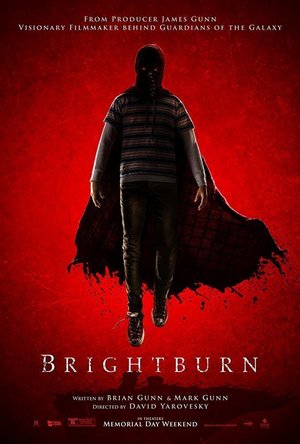
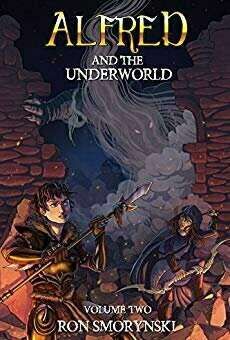
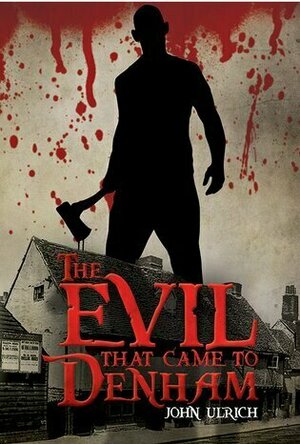
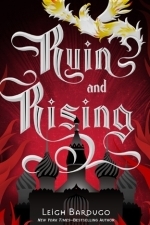
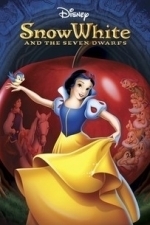
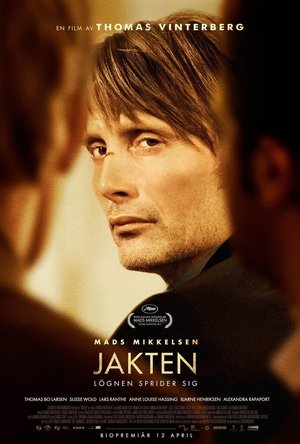
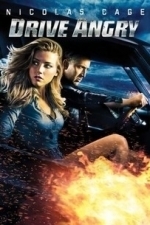
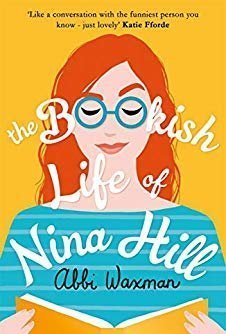
Lee (2222 KP) Jul 2, 2019